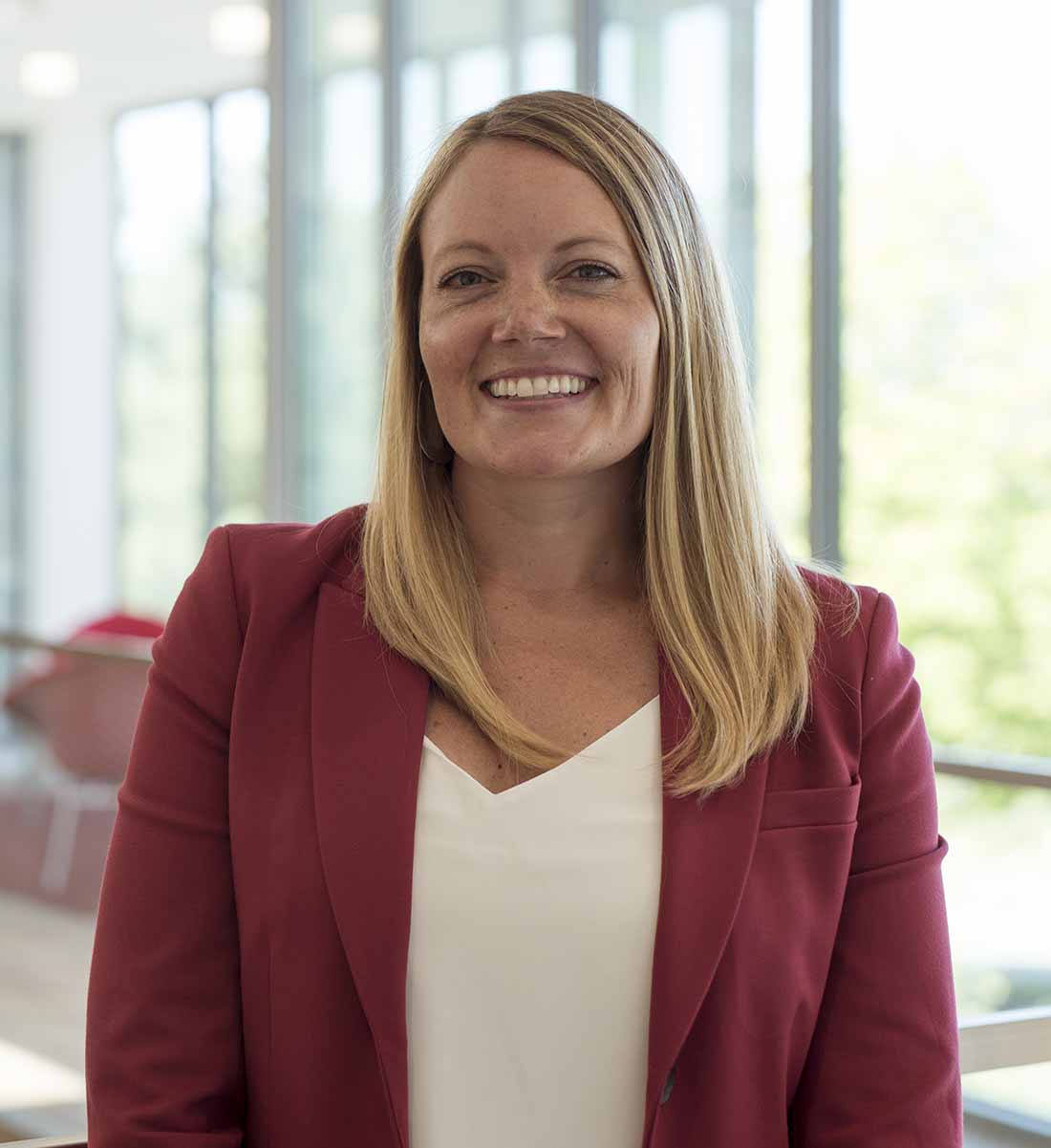Trauma-Informed Teachers for Tots
 Alysse Loomis, assistant professor in the College of Social Work, didn’t start her
career in research. She started with trauma care. Initially she trained to work
with adults, helping them come to terms with trauma they had experienced. Then she
had a realization—if we intervene earlier to treat trauma, perhaps we could have an
even more profound effect in our treatment. This led her to focus her work on adolescents.
And then at some point in her training she thought, perhaps if we intervene even earlier, we could have an even stronger effect. Eventually, this thought process led her to working with the youngest among
us—kids from birth to age 6.
Alysse Loomis, assistant professor in the College of Social Work, didn’t start her
career in research. She started with trauma care. Initially she trained to work
with adults, helping them come to terms with trauma they had experienced. Then she
had a realization—if we intervene earlier to treat trauma, perhaps we could have an
even more profound effect in our treatment. This led her to focus her work on adolescents.
And then at some point in her training she thought, perhaps if we intervene even earlier, we could have an even stronger effect. Eventually, this thought process led her to working with the youngest among
us—kids from birth to age 6.
“It’s a myth that children are too young to remember trauma or too young for it to have an impact,” Dr. Loomis explained. “The more I worked with young children and caregivers, the more I realized how common trauma is in that age range, and it how it can really shape a young child’s development.” Her goal was to intervene and provide supports to heal trauma early, in order to help set up a more positive life trajectory.
At first, she would work with kids and caregivers in their homes, helping to support adults in trying to understand and support their child’s trauma-related behaviors. “I would often ask caregivers to think of themselves as detectives, to consider what might be behind a particular behavior.” She continued, “Ultimately it’s an attempt to get beyond the actions—to try and recognize what might be driving the behavior for the child and how the underlying cause, or trauma, might impact the child.”
One thing she consistently saw was the difficulty in transferring those skills to other settings. “We place so much of an emphasis on parents and children to heal after trauma. But then kids go to school, and there’s this whole system that isn’t necessarily set up to help them or, at times, can be more triggering.” It was this question—how trauma was affecting kids at schools and how clinicians, caregivers, and teachers could be supported as partners in addressing and supporting children through trauma—that prompted her to earn her PhD.
Now several years out of her PhD program, Dr. Loomis researches how different types of trauma training for preschool teachers impact their trauma-informed attitudes and behaviors.
She explains there are broadly three types of trauma-informed training for teachers:
- Knowledge-based training focuses on things like definitions and direct impact of trauma on student behavior;
- Skills-based training teaches things like how to respond to a child’s trauma-related behavior in the classroom and what steps to take to refer the child and family for services; and
- Self-based training helps teachers understand how their own trauma responses might come out in the classroom or how a student’s trauma might impact them.
The results from her most recent study on the matter offer encouraging insights and direction for the future. They suggest that many teachers already have some sort of experience with trauma-informed trainings. They indicate that teachers who received any self-based training are more likely to have stronger trauma-informed attitudes. Self-based training is also the type of training the teachers in her study were most interested in receiving, though it was the type of training they were least likely to have received.
“It’s like teachers already sense what they need in order to be the most effective,” notes Dr. Loomis. “I’ve found that teachers are really open to and interested in resources to help manage trauma in the classroom. Managing trauma in the classroom is difficult. Some of the behaviors that manifest from childhood trauma can feel scary and unmanageable. It can feel unsafe—unsafe to you, unsafe to the child experiencing trauma, unsafe for the other kids. But children are most helped when the person helping them with their big feelings is able to stay calm and caring. If we can help teachers be in tune with their own reactions and experiences, it might make it easier for them to stay calm in the face of those big behaviors—it could result in fewer student outbursts, and help teachers feel more in control when they do happen.”
A Closer Look
“There is a lot of research on the harmful effects of these adverse childhood experiences (such as witnessing violence and child abuse/neglect), but there is also more and more research coming out about the effects of positive childhood experiences. Positive childhood experiences can actually buffer or reduce the impact of adverse experiences. A warm relationship with a teacher is one of those positive experiences that can have such a strong a lasting impact!”
Because many schools are already doing trauma-informed trainings, Dr. Loomis is hopeful these changes will be relatively easy to implement. “A small shift to include a self-reflection element in these trainings could make a big difference for both the teacher and the kids in the classroom.”
Even though Dr. Loomis’ work is now primarily researched-based, with numbers and figures rather than personal interactions with clients, she still tries to center people in the data; to think about the wonderful teachers she’s met along the way. “It’s incredible the power a teacher can have—how magical a good teacher can be for a child.”
